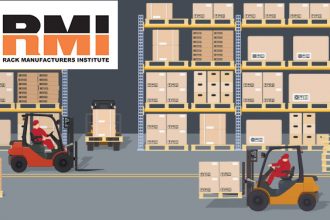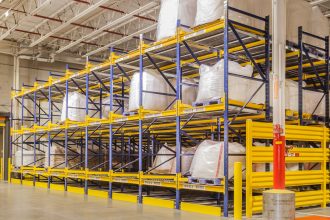How Semi-Automated Pallet Handling Systems Increase Storage Density, Throughput
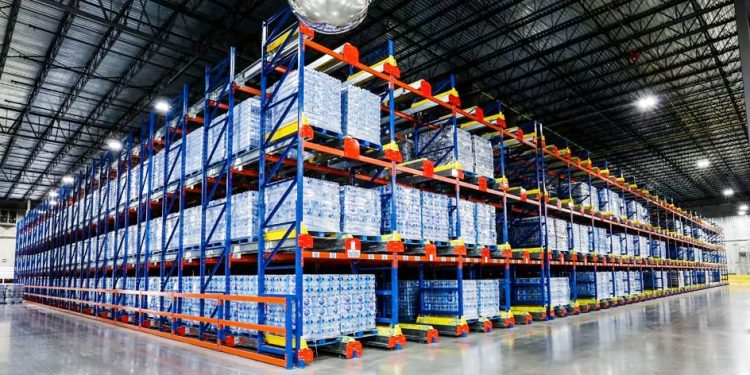
Nearly every company that stores inventory struggled with supply chain disruptions during the pandemic. Many experienced out-of-stocks and backorders that lasted for months, resulting in unhappy customers. In response, warehouses and distribution centers that previously only held on to a couple of weeks-worth of inventory now hold up to six months of safety stock. Yet few have the available capacity to store it all. Nor can they access it quickly. In response, several rack manufacturers — including some members of the Rack Manufacturers Institute (RMI) — offer a high-volume, easy-access motorized solution. Here’s how these semi-automated pallet handling systems increase storage density and throughput.
Systems Enable Dense Storage
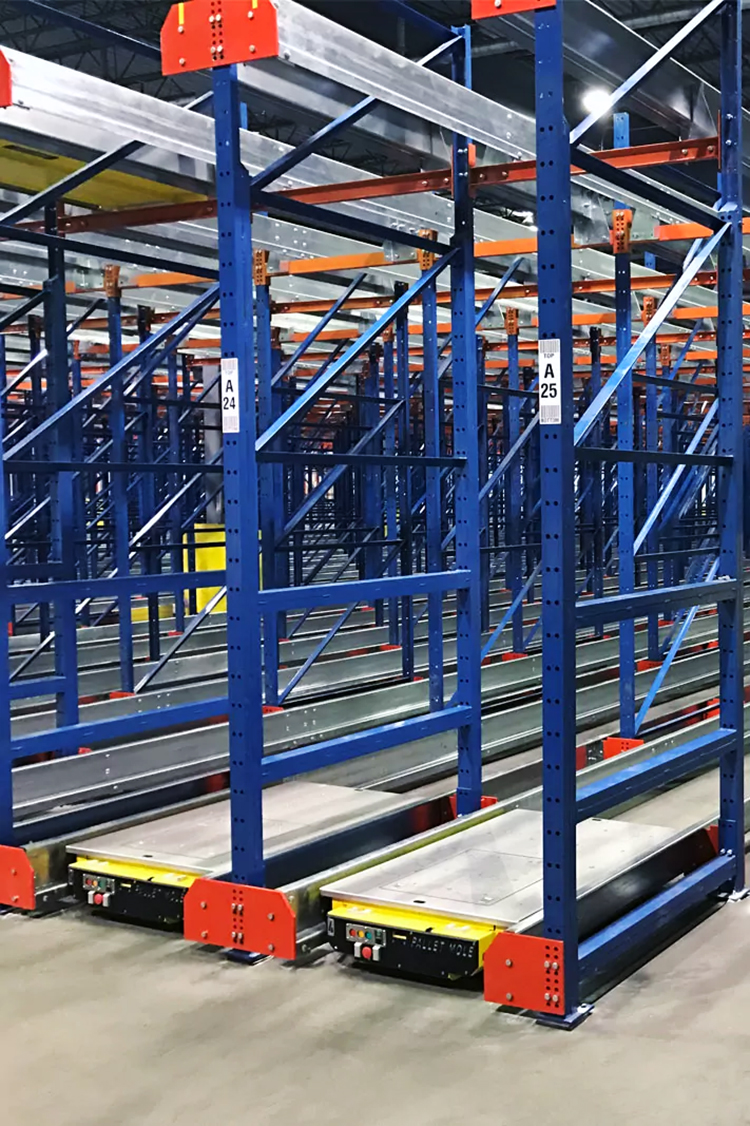
Constructed from traditional storage rack components, including beams and upright columns, these high-density storage systems store 50% or more pallets than selective rack, said Carlos Oliver, President of Frazier Industrial Company, an RMI member.
“Similar in appearance to deep-lane drive-in rack, these systems incorporate rails upon which pallets rest,” he explained. “Unlike drive-in rack — which stores the same product floor-to-ceiling and to the full depth of the racking — these systems can store up to 50 pallet positions deep with each level being a different item.”
Also unlike drive-in rack, the forklift never enters the system. Instead, motorized pallet handling devices (sometimes called “moles,” “shuttles,” or “carriers”) travel beneath the stored pallets on a set of rails.
Because the forklift does not travel into the racking structure, these semi-automated pallet handling systems are ideal for refrigerated or freezer storage. They maximize storage density in a thermally sensitive area, reducing energy costs. Further, operators’ exposure to low temperatures is minimized.
Semi-Automated Systems Enhance Selectivity
As directed by the forklift operator via a wireless controller, each semi-automated pallet handling device travels back and forth within a row of stored pallets to a specific location. An integrated lifting platform rises up to lift the pallet load from underneath. Following the operator’s instructions, the device transports the load to the back of the storage lane.
Because the pallet handling device travels independently to access different stock keeping units (SKUs) stored on every level, these systems support greater pallet selectivity, continued Oliver.
“These semi-automated systems can hold several pallets of the same SKU per lane, but different SKUs per level,” he explained. “In comparison, drive-in systems can only hold one SKU per bay, meaning just one product stored in every position, from floor to ceiling and to the back of the bay.”
Additionally, semi-automated pallet handling systems work for both first-in/first-out (FIFO) and last-in/first-out (LIFO) applications. This enhances overall inventory control accuracy and productivity.
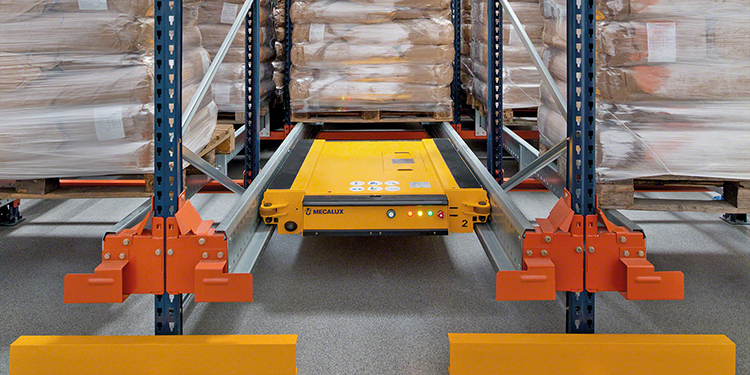
Faster Throughput Through Greater Accessibility
With a semi-automated pallet handling system, throughput speeds increase. That’s because the handling device indexes loads directly to the first pallet position at the aisle face. This process repeats continuously and simultaneously across the different pallet lanes. Therefore, a forklift can more quickly retrieve (or store) pallets than in other deep lane rack systems.
The increase in pallet placement and retrieval speed also optimizes labor efficiency. Forklift operators can make more moves in the same shift. They can also load or unload trailers more quickly, further increasing throughput.
“In fact, when utilizing this type of system for staging loads, trucks that typically take one hour to load can now be loaded in 30 minutes,” noted Oliver. “That supports an increase in the number of trucks that can be loaded in the same amount of time.”
Learn More About Semi-Automated Pallet Handling Systems
Several RMI members engineer, manufacture, and supply semi-automated pallet handling systems. Connect with them and access a variety of design and safety resources via mhi.org/rmi.

